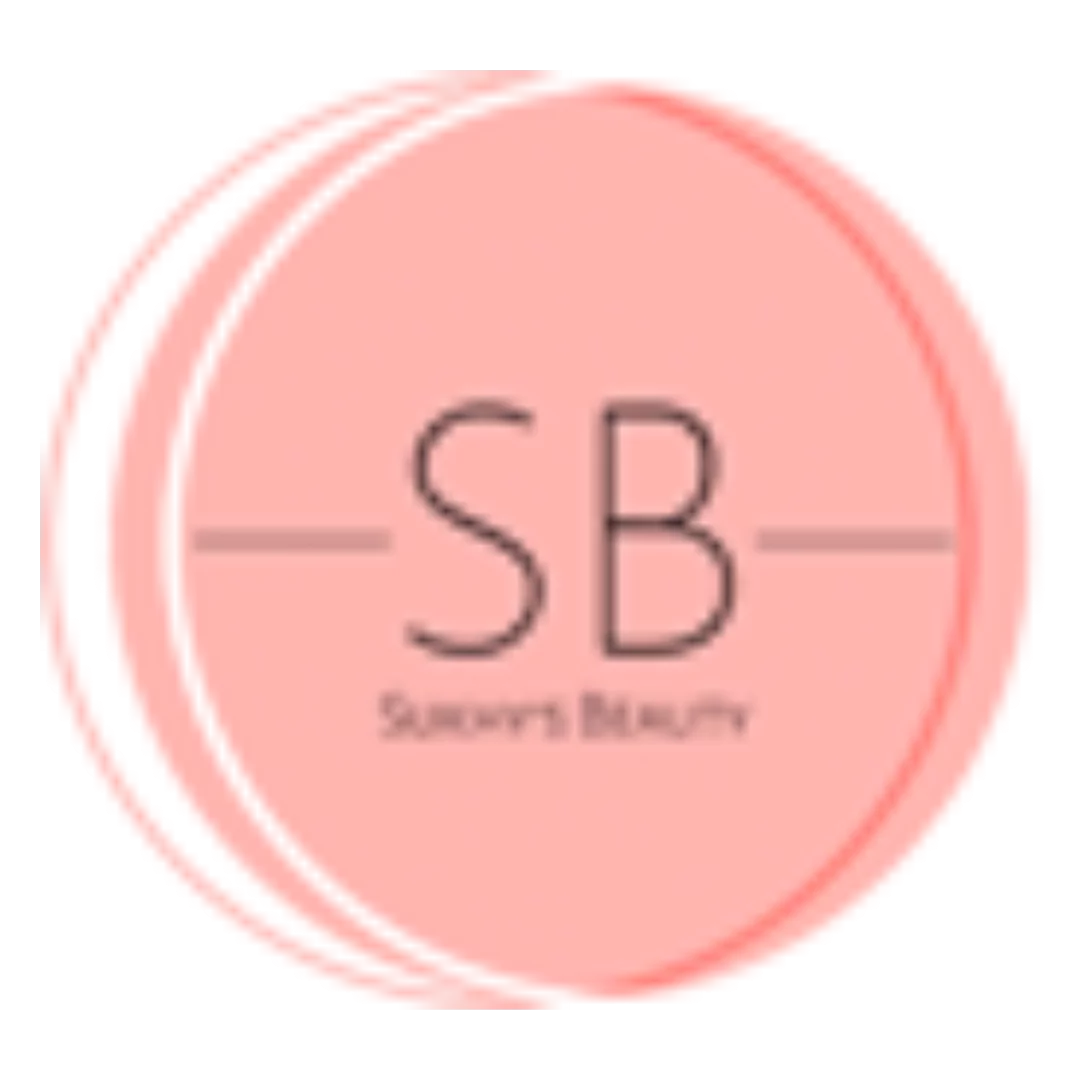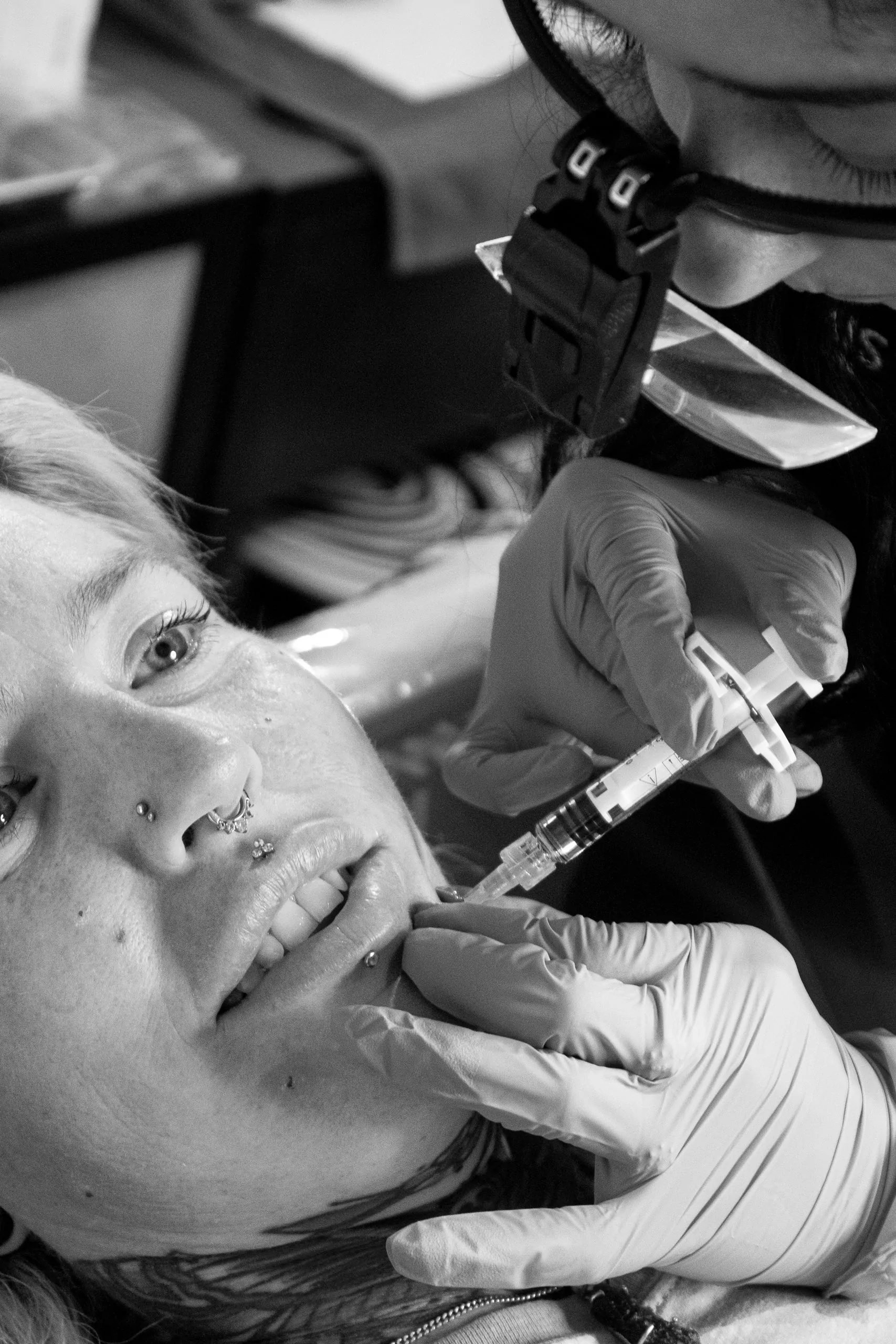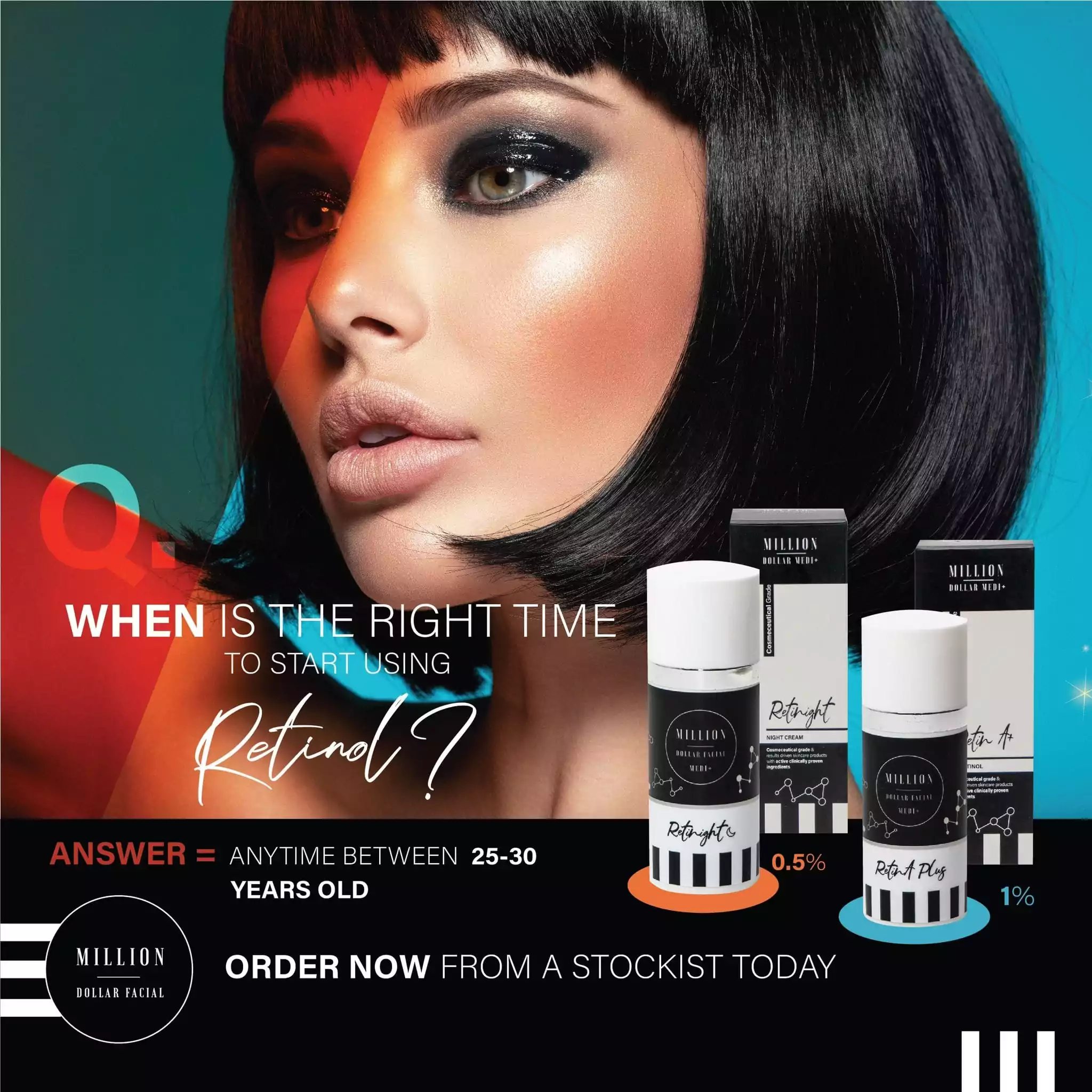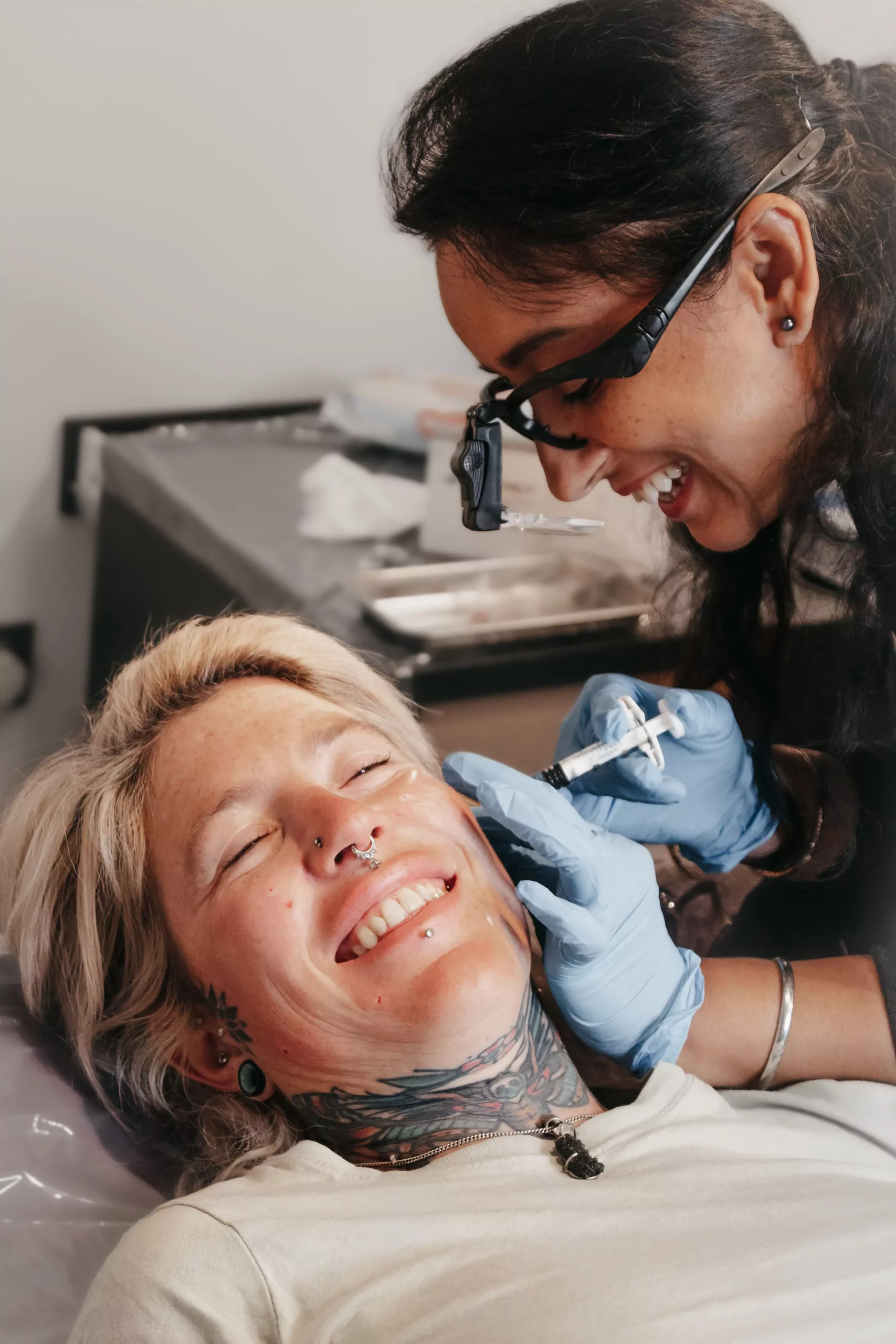My Favourite Habit Stacks for Health, Beauty & Calm
As a Face Yoga Coach and wellness expert, you might assume I spend hours each day in a spa-like self-care routine. But here’s the truth: I’m a 43-year-old mum running a busy business. Time is precious — and that’s why I rely on habit stacking to stay consistent with my health, beauty, and mindset rituals.
💡 What is Habit Stacking?
Habit stacking means pairing a new habit with an existing one — so you build wellness into your day without adding pressure. It’s how I stay aligned and energised, even on the busiest of days.
🌅 My Go-To Habit Stacks for Daily Wellness
These are some of the personal rituals that keep me grounded, glowing, and calm:
🧘♀️ Sun Salutations + Prayer (5–10 mins)
First thing in the morning, I move through gentle sun salutations — a beautiful way to open the body and mind. At the end of the sequence, I take a moment for prayer and gratitude.
💭 Physical movement + spiritual connection = aligned start to the day.
🚶♀️ Morning Walk + Grounding Sikh Podcast (15–30 mins)
During my walk, I listen to uplifting Sikh-rooted podcasts that reconnect me with my faith and values.
🎧 A walk for the body, a podcast for the soul.
🤸♀️ Body Stretches + Affirmations (3–5 mins)
As I stretch my arms, legs, and back in the morning, I speak or think affirmations like:
“I am strong. I am radiant. I am exactly where I need to be.”
This simple pairing wakes up both my body and my self-belief.
🧺 Laundry Time + Face Yoga (5 mins)
When I put on a load of washing or hang clothes out to dry, I use those moments to do simple Face Yoga exercises.
🌀 Boosts circulation, lifts the face — and gets the chores done too.
🚗💬 Drive to Gym + Skincare or Business Audiobook (20–30 mins)
While driving or working out, I tune into audiobooks that feed my mind — whether it’s about:
Holistic skincare
Spiritual growth
Business development
🧠💪 It’s my way of nourishing body and mind in one go.
✨ Why Habit Stacking Works
Habit stacking is a beautiful way to upgrade your wellness routine without overwhelm.
It helps you:
Stay consistent, even on busy days
Build rituals that actually fit into real life
Feel more connected to your body, mind and soul
✅ Want to Start Habit Stacking? Try These Simple Ideas:
🪥 Do Face Yoga while brushing your teeth
🚿 Massage your face in the shower using lymphatic drainage strokes
💧 Apply skincare slowly while saying your morning affirmations
📱 Set a 2-minute face yoga reminder while your kettle boils or coffee brews
💬 Final Thought
Whether you’re new to Face Yoga or a seasoned practitioner, stacking your habits can transform how you look and feel.
Start small. Stay consistent. And let your daily routines become powerful acts of self-care.
Category: Uncategorised
Unlocking the Magic of Eye Exercises in Your Daily Routine
As a professional Face Yoga Coach with five years of experience in holistic practices, I’ve come to discover the profound benefits that eye exercises can bring into your daily life. These simple, yet powerful, routines not only promote long-term eye health but can also transform the appearance of your face, giving you brighter, bigger-looking eyes.
My Journey with Eye Exercises
When I first began my journey with face yoga, one of the initial practices I focused on was strengthening the eye area. I noticed subtle signs of aging around my eyes: my eye muscles felt weaker, and my eyebrows were beginning to droop. That’s when I started to explore targeted eye exercises to build strength and resilience in the muscles around my eyes. Over time, I could visibly see a lift and firmness around my eye area, which inspired me to integrate these exercises into my daily routine and share the benefits with others.
Key Benefits of Eye Exercises

1. Reduced Crow’s Feet and Smoother Lines
Strengthening the muscles around the eyes helps smooth out fine lines and crow’s feet, which commonly appear at the corners of the eyes. By boosting blood circulation, eye exercises promote a softer, more youthful look, as increased blood flow helps nourish the skin, resulting in smoother lines.
2. Lifting and Firming the Eye Area
Regular eye exercises help tighten the delicate skin around the eyes, improving muscle tone and elasticity. This firmness reduces sagging and gives the eyes a brighter, wider appearance. Over time, your eye area will appear more lifted, making your eyes look bigger and more open.
3. Preventing Eye Strain and Fatigue
If you work in a profession that requires extensive screen time, driving, or other visually demanding tasks, your eyes can easily become fatigued. Eye exercises offer relief from eye strain and help prevent tiredness, keeping your eyes refreshed and energized. Regularly working these muscles can also prevent the effects of screen-related eye fatigue.
4. Reducing Puffiness and Under-Eye Bags
Another advantage of eye exercises is their impact on lymphatic drainage. By promoting circulation, these exercises help reduce puffiness and under-eye bags, leaving your eyes looking detoxified and rejuvenated. This natural process helps your eyes feel more awake and vibrant, enhancing the overall health and appearance of your eye area.
5. Strengthening Eye Muscles for a Brighter Appearance
Just like any other muscle in the body, the eye muscles benefit from a regular workout. Strengthening these muscles can enhance the appearance of the eyes, making them look bigger and brighter. With consistent practice, you can build the optimal strength needed for your eyes to maintain a youthful look.
6. Encouraging Relaxation and Reducing Eye-Related Stress
Eye exercises aren’t just about strengthening; they also provide an opportunity to relax the eye muscles. Taking a moment to focus on relaxation helps your eyes reset from the strain of daily tasks. Since stress is a significant contributor to aging, regular relaxation practices help keep the skin around your eyes looking younger and refreshed.
7. The Confidence Boost from Eye Exercises
As someone who has personally struggled with dark circles and tired-looking eyes, I can attest to the confidence boost that regular eye exercises can bring. Teaching face yoga and promoting natural beauty for over five years has shown me that these holistic treatments can make a profound difference. My confidence has grown, my eye area feels revitalized, and incorporating these exercises has become an integral part of my daily wellness routine.
So why not give it a try? Add eye exercises to your self-care regimen to enhance your wellbeing and bring out a more radiant, confident you!
Skin Care During Cancer Treatments
Adapting Your Routine for Chemotherapy and Radiation
Cancer treatments such as chemotherapy and radiation can have profound effects on the body, and the skin is no exception. As the largest organ and primary protective barrier, it becomes particularly vulnerable during these therapies. Understanding how to care for your skin before, during, and after treatment can minimize side effects and prevent further complications.
Why Skin Care Is Critical During Cancer Treatments
The treatments aimed at fighting cancer can often leave your skin sensitive and prone to adverse effects, ranging from mild irritation to more severe reactions that could impact your overall comfort and the treatment process. Common skin changes during chemotherapy or radiation include redness, dryness, flakiness, peeling, itchiness, soreness, and rashes.
It’s essential not to pick, scrape, or exfoliate irritated skin, as it’s more susceptible to infections due to its compromised state. These skin reactions typically begin a few weeks into treatment and can take time to resolve after treatments end.
Preparing Your Skin Before Cancer Treatments
Cleansing
Starting a good skincare routine before undergoing cancer treatment can strengthen your skin’s barriers. Use lukewarm water and gentle cleansers that are free from harsh chemicals, such as Alpha Hydroxy Acids, which can aggravate already sensitive skin. Cleansers containing soothing ingredients like aloe vera are more suitable. It’s best to avoid sponges or cloths, which can harbor bacteria, and instead use your hands to ensure thorough rinsing.
Enhancing Moisturisation for Cancer Patients: A Detailed Guide
As a seasoned skin therapist and salon owner, I understand the critical importance of maintaining skin hydration, especially for individuals undergoing cancer treatment. Treatments such as chemotherapy and radiation can severely compromise the skin’s natural moisture barrier, leading to dryness, irritation, and sensitivity. Here’s a comprehensive approach to moisturizing, which is crucial for preserving skin health and comfort during such challenging times.
Key Principles of Effective Moisturisation
Choosing the Right Moisturiser
The goal is to replenish and lock in moisture while protecting the skin’s natural barrier. Look for moisturizers that are specifically formulated to be gentle and replenishing. These products should be:
Fragrance-Free: Fragrances can irritate compromised skin, potentially leading to dermatitis or other skin reactions.
Hypoallergenic: Minimizes the risk of allergic reactions, which is crucial for sensitized skin during treatment.
Rich in Essential Ingredients: Ingredients should actively support skin recovery and barrier repair.
Recommended Ingredients for Cancer Patients
Niacinamide (Vitamin B3): Helps build proteins in the skin and locks moisture in, thereby strengthening the skin barrier.
Hyaluronic Acid: A powerful humectant that attracts and retains moisture, helping to hydrate and plump the skin effectively.
Ceramides: Essential lipids that form the skin’s barrier and help retain moisture.
Glycerin: Another effective humectant that draws water into the outer layer of the skin.
Aloe Vera: Known for its soothing properties, aloe vera can help calm irritation and hydrate the skin gently.
Application Techniques
Apply Moisturiser on Damp Skin: After cleansing, apply moisturizer while your skin is still damp to lock in extra moisture.
Gentle Application: Use light, soft motions to apply the moisturizer. Avoid rubbing or pulling, which can further irritate the skin.
Frequent Reapplication: Moisturizing multiple times a day—especially after washing or bathing—can significantly aid in maintaining skin hydration and elasticity.
Additional Remedies for Itchy or Extremely Dry Skin
Colloidal Oatmeal Baths: For soothing severe itchiness or irritation, a warm bath with colloidal oatmeal can provide immediate relief. Oatmeal has anti-inflammatory properties that help soothe and comfort the skin.
Cool Compresses: Applying cool, wet compresses to itchy areas can calm the itch and reduce the urge to scratch.
Environmental Considerations
Humidify Your Environment: Using a humidifier, especially in dry climates or during winter months, can add necessary moisture back into the air, helping to keep your skin hydrated.
Avoid Hot Showers: Very hot water can strip your skin of its natural oils. Opt for lukewarm water when bathing or washing your hands.
Protecting the Skin from the Sun
As a skin therapist with years of experience, I cannot stress enough the importance of sun protection, particularly for those undergoing cancer treatment. Chemotherapy and radiation often weaken the skin’s natural barrier, leaving it more susceptible to environmental aggressors like the sun’s UV rays.
Why Sun Protection Is Critical
Cancer treatments can render your skin fragile and sensitive. Radiation, in particular, can cause radiation dermatitis, leading to redness, peeling, and irritation in the treated area. Chemotherapy may result in photosensitivity, where your skin reacts more intensely to sunlight. Therefore, it’s imperative to minimize sun exposure and protect your skin diligently.
Sun Protection Tips for Cancer Patients
Wear Protective Clothing
Opt for long-sleeved tops and lightweight trousers made of tightly woven fabrics that can block UV rays. Clothes specifically designed with UPF (Ultraviolet Protection Factor) offer superior protection. Choose light, breathable materials to stay comfortable.
Choose the Right Hat
A wide-brimmed hat (at least 3 inches wide) can shield your face, neck, and ears from direct sunlight. Look for hats with a UPF rating or those made of tightly woven fabric to maximize protection.
Use Sunscreen Religiously
Apply a broad-spectrum sunscreen with at least SPF 30 or higher to all exposed areas of your body. Ensure the sunscreen is fragrance-free and hypoallergenic to minimize the risk of irritation. Here’s what to look for:
Zinc Oxide or Titanium Dioxide: Mineral-based sunscreens are gentle and less likely to cause irritation.
Broad-Spectrum: Protects against both UVA and UVB rays.
Water-Resistant: Ensures longer-lasting coverage.
Apply at least 15 minutes before going outside, and reapply every two hours or immediately after swimming or sweating.
Seek Shade
Limit direct sun exposure, especially between 10 a.m. and 4 p.m., when UV rays are at their strongest. Seek shade under an umbrella or a tree whenever possible.
Wear Sunglasses
UV rays can also affect your eyes. Opt for sunglasses with 100% UV protection to protect your eyes and the delicate skin around them.
Skin Boosters for Aesthetic Treatments: An Honest Look
The world of aesthetic treatments is vast, with a plethora of procedures designed to rejuvenate, refresh, and restore our skin’s youthful appearance. Among the rising stars in this domain are ‘skin boosters’. But what exactly are they, and how do they differ from the well-known dermal fillers? Let’s dive deep into the world of skin boosters.
What are Skin Boosters?
Skin boosters are hydrating treatments that improve the skin’s quality by boosting hydration levels deep inside the skin, resulting in improved elasticity, texture, and radiance. Unlike some other aesthetic treatments that target specific wrinkles or folds, skin boosters nourish the skin from within to provide an overall revitalized look.
How are Skin Boosters Different from Fillers?
At first glance, skin boosters and dermal fillers might seem similar, but they serve distinct purposes:
- Purpose: While dermal fillers are typically used to restore volume or fill in deep lines and wrinkles, skin boosters primarily hydrate and improve the overall texture of the skin.
- Composition: Both are generally composed of hyaluronic acid (HA), a naturally occurring substance in our skin. However, in skin boosters, the HA is more diluted and spread out to hydrate the skin’s surface.
- Application: Fillers are often injected into specific areas to achieve targeted results. In contrast, skin boosters are generally applied over larger areas like the face, neck, and hands to improve overall skin quality.
Who is it Suitable For?
Skin boosters are versatile, catering to a broad spectrum of individuals:
- Ageing Skin: Those experiencing the early signs of aging benefit from the improved skin elasticity and reduced fine lines.
- Dry Skin: Individuals with dry or dehydrated skin can reap the benefits of the intense hydration that skin boosters offer.
- Dull Skin: If you’re aiming for a radiant and glowing complexion, skin boosters can be a game-changer.
However, like all aesthetic treatments, a consultation with a dermatologist or trained professional is essential before undergoing any procedure.
Frequency of Treatment
Generally, an initial series of treatments spaced a few weeks apart is recommended for optimum results. After that, maintenance sessions every 6-12 months can help prolong and maintain the skin’s luminosity and hydration.
Ingredients in a Skin Booster
While the primary ingredient in many skin boosters is hyaluronic acid, some products may also contain vitamins, antioxidants, minerals, and amino acids. These additional ingredients work synergistically with HA to provide even better results.
Procedure and Timing
A typical skin booster treatment involves the following steps:
- Consultation: A pre-procedure consultation to discuss needs and expectations.
- Preparation: The skin is cleansed and, in some cases, a topical numbing cream is applied.
- Injection: Using fine needles or a micro-cannula, the skin booster is injected into the skin’s superficial layer.
- Post-procedure: There might be some redness or minor swelling, but this typically subsides within a day or two.
The actual injection process usually takes about 20-30 minutes, but with preparation and post-procedure care, plan for approximately an hour-long appointment.
In Conclusion
Skin boosters are a revolutionary addition to the world of aesthetic treatments, offering a unique solution for those looking to hydrate, rejuvenate, and enhance their skin’s natural beauty. Like all treatments, ensure you’re informed and consult with a trusted professional to determine if skin boosters are right for you.
Unveiling the Power of Retinol: The Fountain of Youth in Skincare
In the extensive world of skincare, retinol stands out as a game-changer, one that everyone should know and consider incorporating into their routine. By the end of this read, I hope to pique your curiosity and convince you to give Retinol a chance.
The Magic of Retinoids
Retinoids, the family name given to all Vitamin A-based molecules, encompass a wide variety of types that work in unique ways and come in different forms. They may be available as creams, oils, and serums, each varying in strength.
Retinoids are unparalleled in the skincare market. They are the only product scientifically proven to aid in anti-aging. Notably, retinoids have the unique ability to penetrate skin cells and communicate with their core, known as fibroblasts.
The Fountain of Youth – Fibroblasts
Fibroblasts, often referred to as the fountain of youth, are responsible for producing three key elements of youth: collagen, elastin, and hyaluronic acid. These elements are crucial for maintaining our skin’s youthful appearance and elasticity. Unfortunately, from the age of 25, these cells become less active, only springing into action when we suffer an injury.
To invigorate these dormant cells, several facial treatments, such as micro-needling, chemical peels, laser treatments, and other facials, have been devised. These treatments stimulate the fibroblasts, encouraging them to produce the three youthful elements.

The Benefits of Retinoids
Retinoids work by increasing the speed of cell turnover, reducing the usual 6-8 week process to an impressive 2-3 weeks. This faster turnover helps rejuvenate the skin, removing the dead layers and revealing a brighter, more youthful complexion.
When first introducing retinoids into your skincare routine, you may experience some dryness and peeling. While it may seem alarming, this reaction is actually a sign that the retinoid is doing its job, eliminating dead skin from the stratum corneum (the outermost layer of the skin).
Retinoids are available in different strengths, with some requiring a prescription from a skincare specialist. However, a 1% solution can typically be purchased over the counter without a prescription. Most people should start with a 1% solution and gradually increase the strength as their skin becomes more tolerant to retinoids.
The Impact of Retinoids on Your Skin
Aside from anti-aging benefits, retinoids are also potent agents in combating pigmentation, helping to even out your skin tone. They stimulate an increase in collagen, elastin, and hyaluronic acid production, resulting in a healthier, more youthful-looking skin.
In addition, retinoids boost blood circulation to the skin and aid in reducing excessive oil production, making them a beneficial addition to your skincare regimen if you struggle with oily skin.
Final Thoughts
As you delve deeper into understanding retinoids, you will discover how they have become a cornerstone in the realm of skincare. Incorporating them into your skincare routine can make a significant difference, giving your skin a rejuvenated, youthful glow. I hope you found this information useful, and remember, it’s never too early or too late to start taking care of your skin!
Remember, as with any skincare product, it is crucial to consult a skincare professional before starting a new regimen to ensure it suits your skin type and needs.
My Journey with Profhilo: A Treatment That Transforms
In the dynamic world of aesthetic treatments, there’s always something innovative and
transformative catching my attention. Among these, Profhilo stands out as a game-changer, and
today, I’d love to share my experience and the meticulous process I undertake when offering this
treatment to my valued clients.
Beginning with Consultation
Every successful treatment starts with a comprehensive consultation. For my clients interested in
Profhilo, I always dispatch a consultation form first. This helps me gauge the individual’s suitability
for the procedure and understand any unique requirements or concerns. Rest assured, this step
ensures that every treatment I provide is tailored and safe.
Welcoming My Client
Upon arrival, the journey into rejuvenation begins. While the consultation form provides preliminary
information, I believe in face-to-face interaction to instill confidence and understanding. I walk my
clients through the treatment process, ensuring they know what to expect, and discussing the
aftercare essential for the best results.
Understanding Profhilo
Before delving into the procedure, it’s pivotal to understand what Profhilo is. Profhilo is not just
another filler; it’s a unique hyaluronic acid-based treatment that integrates into the skin, enhancing
its hydration, firmness, and overall texture. It spreads into the dermis like honey!
Benefits & Suitability
Profhilo offers a myriad of benefits, from rejuvenating ageing skin, increasing elasticity, to adding a
radiant glow that many of us yearn for. It’s typically suited for individuals noticing the early signs of
aging or those looking to enhance the hydration and texture of their skin. The magic of Profhilo lies
in its ability to stimulate collagen and elastin, the skin’s natural allies in maintaining youthfulness.
Ensuring Hygiene and Safety
For me, the safety and comfort of my clients are paramount. Before initiating the treatment, I
meticulously cleanse the target area using an alcohol wipe or sterilizing liquid. This ensures that any
potential contaminants are removed, paving the way for a safe procedure.
Hygiene extends beyond just the treatment site. I am deeply committed to preventing cross-
contamination, ensuring that all my tools and products are handled with the utmost care. In line
with this, I only unbox the injection when we’re ready to begin, ensuring its integrity and purity.
The Treatment Process
Though the actual treatment takes around 30 minutes, I always allocate an hour for the entire
appointment. This gives us ample time to address any queries, concerns, and for the all-important
post-treatment discussion.
It’s worth noting that post-treatment, slight swelling, or a small bump might appear at the injection
site. However, from my experience, these are temporary and soon dissolve, leaving behind
refreshed, glowing skin.
Aftercare & Next Steps
Post-treatment care is crucial to achieving the best results. I always take the time to discuss
aftercare with my clients, guiding them on what to expect and how to care for their skin in the days
following the procedure. Before parting ways, we set the date for the next appointment, ensuring a
continuous journey towards radiant, rejuvenated skin.
Final Thoughts
Profhilo has genuinely revolutionized the way I approach skin rejuvenation. It’s not just about
aesthetics, but the confidence and happiness it brings to my clients. If you’re considering this
treatment, know that with me, you’re in experienced, caring hands, every step of the way.




